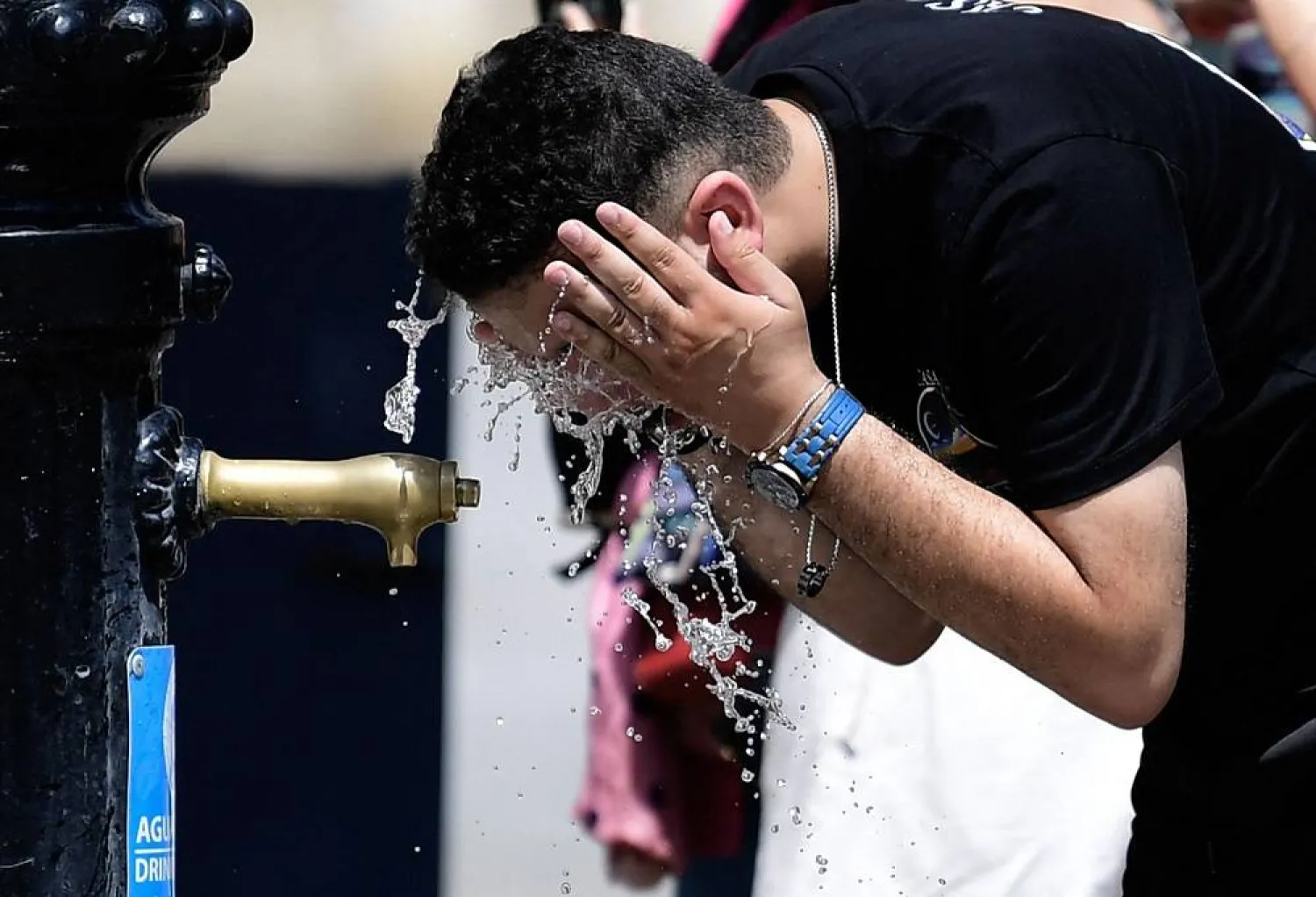Street vendors in Mali's capital of Bamako peddle water sachets, ubiquitous for this part of West Africa during the hottest months. This year, an unprecedented heat wave has led to a surge in deaths, experts say, warning of more scorching weather ahead as effects of climate change roil the continent.
The heat wave began in late March, as many in this Muslim majority country observed the holy Islamic month of Ramadan with dawn-to-dusk fasting.
On Thursday, temperatures in Bamako reached 44 degrees Celsius (111 Fahrenheit) and weather forecasts say it's not letting up anytime soon.
The city's Gabriel-Touré Hospital reported 102 deaths in the first four days of the month, compared to 130 deaths in all of April last year. It's unknown how many of the fatalities were due to the extreme weather as such data cannot be made public under the regulations imposed by the country's military rulers.
Cheikh A Traoré, Mali’s general director for health, said significantly more elderly people have died during this period although there were no statistics available due to the measures.
Mali has experienced two coups since 2020, leading a wave of political instability that has swept across West and Central Africa in recent years. Along with its political troubles, the country is also in the grip of a worsening insurgency by militants linked to al-Qaeda and the ISIS group.
The Red Cross Red Crescent Climate Centre says that a lack of data in Mali and other West Africa countries affected by this month's heat wave makes it impossible to know how many heat-related deaths there were but estimated that the death toll was likely in the hundreds if not thousands.
The heat is also endangering already vulnerable children in Mali — 1 million under the age of 5 were at risk of acute malnutrition at the end of 2023 due to protracted violence, internal displacement, and restricted access to humanitarian aid, according to the World Food Program.
Professor Boubacar Togo, head of pediatrics at Gabriel-Touré, told The Associated Press that the hospital has had six cases of meningitis in children in the last week, an unusually high number. He also added that there were many illnesses with diarrhea as a leading symptom. Togo did not elaborate or offer specific data.
To protect children from the worst of the heat, Mali's military rulers have shortened the school day, to end before 1 p.m. instead of at 5.30 p.m. during the heat wave. But on the streets of Bamako, workers say they have no choice but to go out and brave the extreme heat.
“Either I work and risk my health or I stop working for the most of the day and I earn nothing,” said 25-year-old driver Amadou Coulibaly, who offers rides on his motorbike for a small fee.
With the political instability, many foreign investors are leaving Mali. Rolling power cuts and fuel shortages have forced companies to shut doors, exacerbating an already dire economic situation.
Despite the heat, 30-year-old welder Somaila Traoré worked in his shop alongside a dozen employees, urging them to work faster.
“We’ve got to finish the job before the power cuts,” he said.
An analysis published Thursday by the World Weather Attribution — an international team of scientists looking at how human-induced climate change impacts extreme weather — said the latest heat wave in the Sahel, a region in Africa south of the Sahara that suffers from periodic droughts, is more than just a Malian record-breaker.
“Our study found that the extreme temperatures across the region simply wouldn’t have been possible without human-caused warming,” said Clair Barnes, the lead author and a researcher at Imperial College London.
The researchers say climate change has made maximum temperatures in Burkina Faso and Mali hotter by 1.5 degrees Celsius (2.7 degrees Fahrenheit) — something that may not have happened “if humans had not warmed the planet by burning fossil fuels.”
With sustained warming temperatures, the trend would continue, with similar events likely once every 20 years, the study said.
“This result is a warning for both the region and the world,” Barnes said. “Extreme heat can be incredibly dangerous and will become more of a threat as the world continues to warm.”









